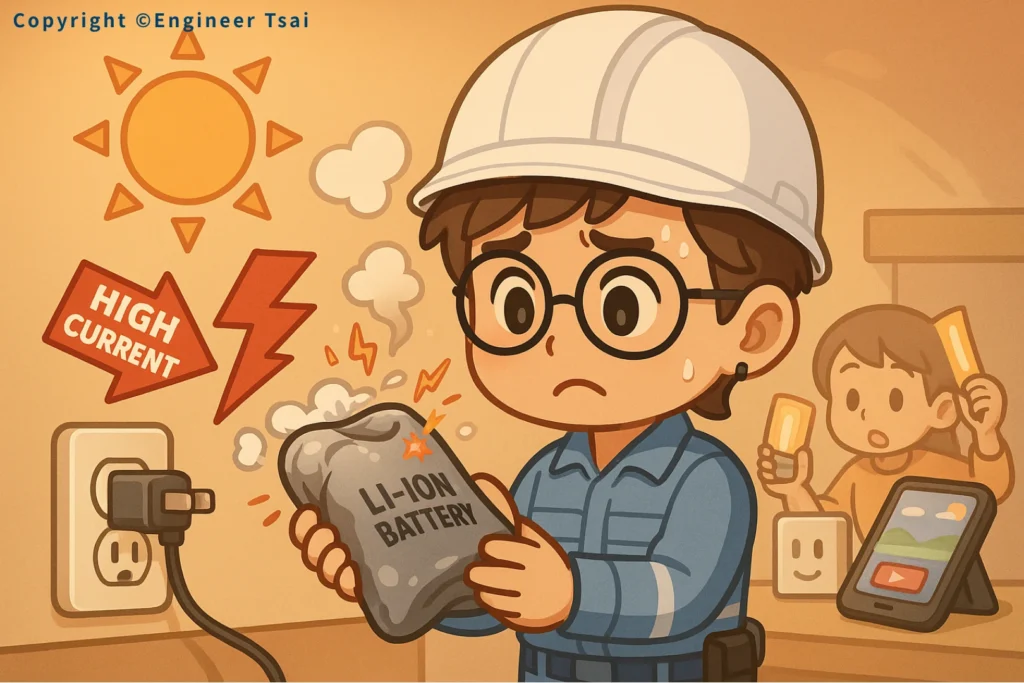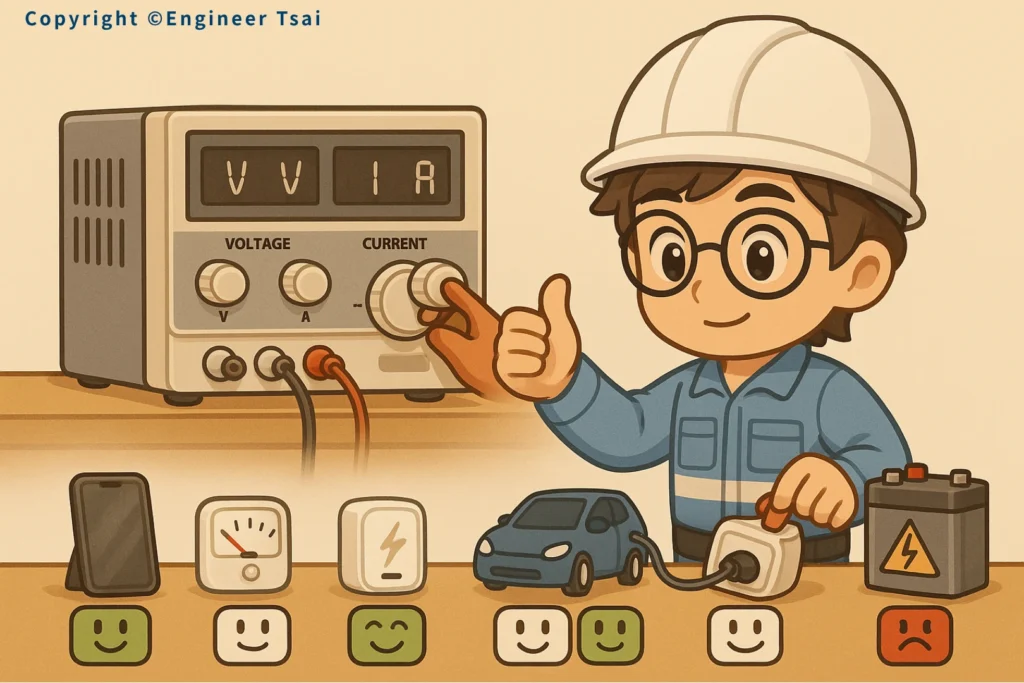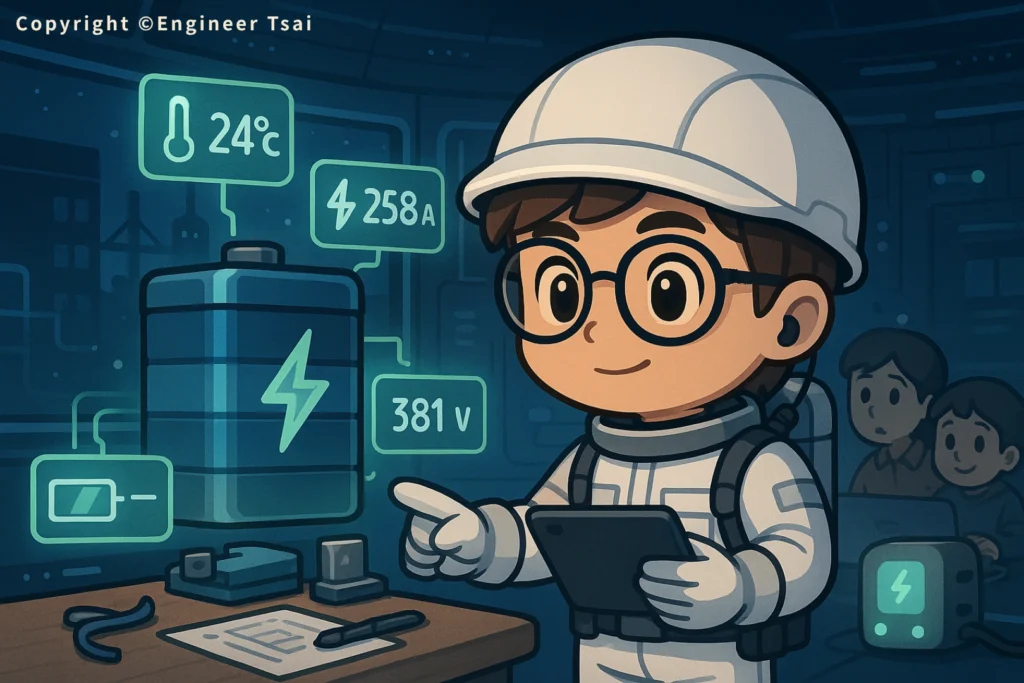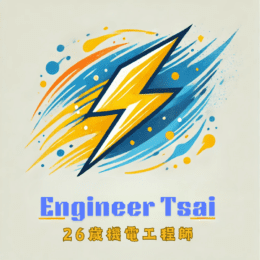▶️ Watch now: Why Your Battery Dies Faster, It’s the Current, Not Just the Age
It’s not just age, too much or too little Charging Current can wreck your battery.
This quick video breaks down how current affects battery life and what you can do to charge smarter.
Your Battery Isn’t Dying of Old Age, Current Might Be Killing It
Ever feel like your phone or laptop battery just can’t hold up anymore, only a year after buying it?
No cracks, no water damage… just suddenly doesn’t last through the day.
Most of us blame battery capacity loss or bad product design.
But here’s a surprising truth:
👉 One of the biggest reasons your battery health tanks fast? The current going through it.
We’re not talking about how often you charge. We’re talking how much current you’re pushing into your battery, and how it affects its internal chemistry—often silently and over time.
This article breaks it down in plain English: what current actually is, how it messes with your battery’s health, and what you can do to stop fast-charging your devices into an early grave.
Chapter 1: What Is Current—and Why Should You Care?
Let’s clear one thing up:
Voltage ≠ Current. They’re different.
Here’s the water pipe analogy:
- Voltage is like water pressure.
- Current is how much water actually flows through the pipe.
So when we say “high current,” we mean more electricity is flowing through your device—fast.
And when current gets too high?
🔥 Heat builds up.
That heat triggers chemical reactions that slowly (or not so slowly) ruin your battery’s internal parts.
Translation?
More current = more heat = shorter battery life.

Chapter 2: Why High Current = Battery Damage (3 Big Reasons)
Let’s break it down:
🔥 1. Overheating: Melts your battery from the inside out
High current creates heat, and heat breaks down the battery’s internal materials.
Ever heard of a phone exploding or swelling up?
That’s thermal runaway—and it starts with heat buildup.
🧯 2. Electrolyte Breakdown: The real reason your battery doesn’t last
Your battery uses electrolyte fluid to move ions back and forth.
Too much current?
That fluid starts to degrade, meaning your battery doesn’t charge well—or hold that charge long.
🧨 3. Chemical Wear-Out: The silent battery killer
Lithium-ion batteries run on chemical reactions.
High current throws those reactions out of balance, creating crystals and damaging materials that reduce your total charge cycles.
So no—it’s not just “using it a lot.”
You’re slowly cooking your battery by letting it run too hot.
But Wait, Isn’t Fast Charging Good?
Fast charging is super convenient, right?
Yeah… but at a cost.
When you cram in a ton of current over a short time, it’s like forcing water through a tiny hose at full blast.
That friction = heat = battery stress.
Here’s what really happens inside:
- Active materials flake off
- The protective SEI layer breaks down
- Internal resistance increases
All of that = less battery capacity, more overheating, and a faster slide toward battery death.
You’re not just fast-charging—
You’re fast-aging your battery.

Chapter 3|Is Low Current Safer? Not Always.
So… if high current is bad for batteries, does that mean low current is always safer?
Well—not exactly.
⚠️ The hidden risks of low charging current:
- Takes forever to charge, keeping the battery at high voltage for too long.
That might lead to something called lithium plating—tiny metal spikes (called dendrites) that can pierce the separator inside your battery and cause shorts. - If your device isn’t designed well, low current can cause instability—like your phone constantly turning on and off because there’s not enough juice to keep it running.
So no—it’s not “the lower the better.”
👉 The real key? The right amount of current—not too much, not too little.
Why Do We Still Love Fast Charging If It’s So Risky?
Let’s be honest—fast charging is awesome.
10 minutes for 50% battery? Sign us up.
But here’s the deal: fast charging gets a bad rep because it can damage batteries if done wrong.
So why are companies still pushing it?
Because most modern fast charging uses smart protocols like:
- PD (Power Delivery)
- QC (Quick Charge)
- VOOC (used by brands like OPPO)
These systems dynamically adjust current and voltage based on your phone’s battery health, temperature, and how full it already is.
👉 It’s not brute force charging—it’s smart and adaptive.
But—and this is a big but—
You need the right cable and charger.
If you use some random off-brand charger, the smart system can misread the signals and either overheat your battery or stop charging too early.
So yes, fast charging is safe—if you use the right tools, at the right time.
Just don’t fast charge while gaming, or when your phone’s baking on your car dashboard.
Chapter 4|What’s the Ideal Charging Current for Different Devices?
Not all batteries are the same.
Charging current should match the device’s design, kind of like how much water different people should drink.
Too much or too little can both cause problems.
📱 Phones and Tablets: Don’t overfeed them
Most phone batteries are designed to charge at 5V, 1–2A.
These days, everyone wants faster charging—but faster isn’t always better.
Long-term use of non-certified chargers over 2A can lead to internal heating and battery wear.
👉 Tip: Stick to OEM chargers or MFi-certified accessories.
Better to charge reliably than speed-charge your battery into early retirement.
🔋 Power Banks: Smart = Safe
Some newer power banks feature intelligent output detection, adjusting current based on what your device needs.
👉 Look for “Smart Output Recognition” when shopping.
That’s the real MVP in protecting your phone’s battery.
🚗 EV Batteries: Fast charge isn’t your everyday solution
Fast charging for electric vehicles is like chugging energy drinks—great in a pinch, but bad as a daily habit.
Frequent fast charging ages EV batteries faster and reduces long-term capacity.
👉 Best practice: Use slow charging most days.
Save fast charging for road trips or emergencies.
Avoid charging in extreme heat (like summer afternoons in parking lots).
🛠️ Industrial Batteries: Align design and reality
For systems like UPS backups, telecom power banks, or lead-acid battery setups, the designed current and real-world load often don’t match.
Too much current = heat damage
Too little = poor efficiency
👉 If you’re working with industrial power, make sure there’s current monitoring and built-in safeguards.
Once these batteries fail, fixing them isn’t cheap—or easy.

Chapter 5|5 Simple Habits That Will Make Your Battery Last Longer
Let’s be real—knowing the science is great, but what you really need are actionable tips you can start doing today.
Here are five smart charging habits that’ll help your battery live a longer, healthier life:
1. Use the Right Charger (Not Just Any Plug That Fits)
Just because a charger fits doesn’t mean it’s safe.
Stick to original or certified chargers—especially for phones and laptops.
Random third-party chargers can deliver inconsistent current or voltage, stressing out your battery and even risking fire.
👉 Look for labels like “MFi Certified” or “UL Listed.”
2. Avoid Fast Charging in Hot Weather
Charging in a hot car during summer? That’s like cooking your battery alive.
High heat + fast charging = death sentence for lithium batteries.
👉 Tip: If it’s over 95°F (35°C), avoid fast charging. Let your device cool before plugging in.
3. Don’t Use It Hard While It’s Charging
Streaming, gaming, live video—all while charging?
That’s a fast track to overheating and premature battery aging.
Let your device rest while it charges.
Think of it like trying to eat, run, and sleep at the same time—it’s just not sustainable.
4. Do a Full Cycle Occasionally (Deep Discharge & Recharge)
Most lithium batteries don’t need full discharges often, but doing one full cycle now and then can help recalibrate the battery’s internal meter.
👉 Once every 1–2 months is enough. Don’t overdo it.
5. Know Your Specs—And Match the Current
Different devices = different current needs.
Charging your smartwatch with a phone charger might sound fine, but the wrong current can wear out delicate components over time.
👉 Read the manual or look up charging specs before plugging in.
Chapter 6|The Future Is Smart: How Batteries Are Learning to Protect Themselves
Batteries are no longer just passive power banks.
They’re getting smarter, safer, and way more selective—thanks to something called a BMS (Battery Management System).
🧠 What Is BMS?
Think of it as your battery’s personal assistant.
It monitors temperature, voltage, and capacity, then adjusts charging current automatically to avoid overcharging, overheating, or damaging the battery.
🍎 Apple and Tesla Are Already Doing It
- Apple iPhones use “Optimized Battery Charging” to pause charging at 80% overnight and finish topping up just before you wake up.
- Tesla’s BMS warms up batteries before charging, balances current between cells, and adjusts fast-charging schedules based on your driving habits.
Other brands like Huawei, Samsung, and even Dell laptops now offer battery protection modes that cap charging at 80% when plugged in for long periods.
👉 These smart features are all about managing current + adapting to how you use your device.
Because here’s the truth:
It’s not use that kills batteries—it’s misuse.

Final Thought|Control the Current, Extend the Life
Your battery isn’t dying because it’s cheap or old—it’s reacting to how you treat it.
🔌 Too much current? You’re overheating it.
🐢 Too little current? You’re wasting time and stressing the system.
🎯 Just the right current? That’s where battery health lives.
So next time you plug in, think about more than just getting to 100%.
Think about charging smarter, not harder.
📌 Recommended Reading:
🔹 Battery in Modern Technology: A Complete Guide
Learn the fundamentals of how batteries store and release energy.
🔹 Current & Voltage for DIY Enthusiasts : Unlock the Basics
Understand the basics so you don’t fall for marketing gimmicks.
🔹 Save Energy, Extend Motor Life: Why VFDs Are a Game-Changer
A deep dive into how we manage current in real-world equipment.
🔹 Smart Energy Management: Optimize Your Home’s Efficiency and Safety
Make your entire household more energy-efficient—and battery-friendly.


